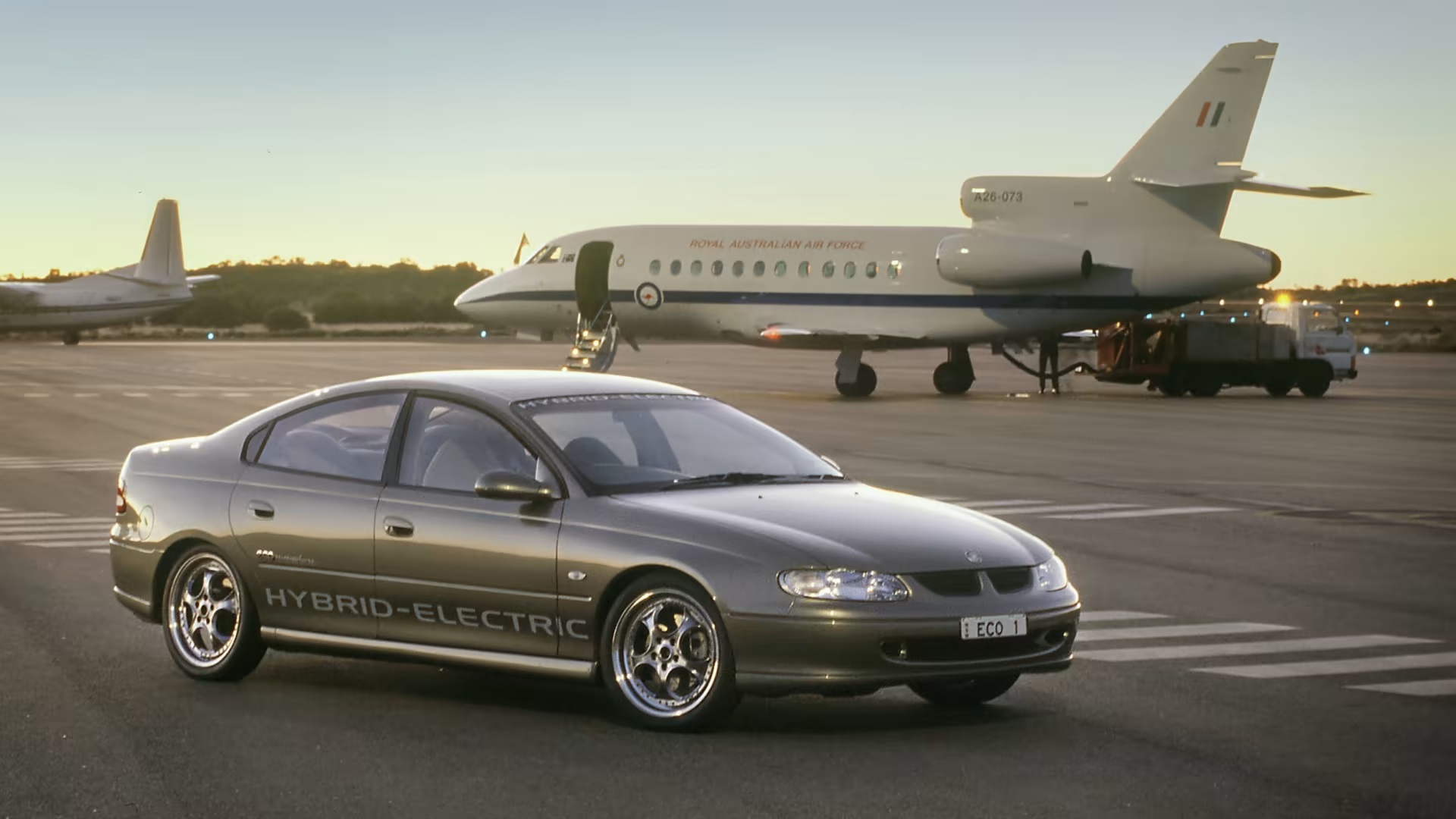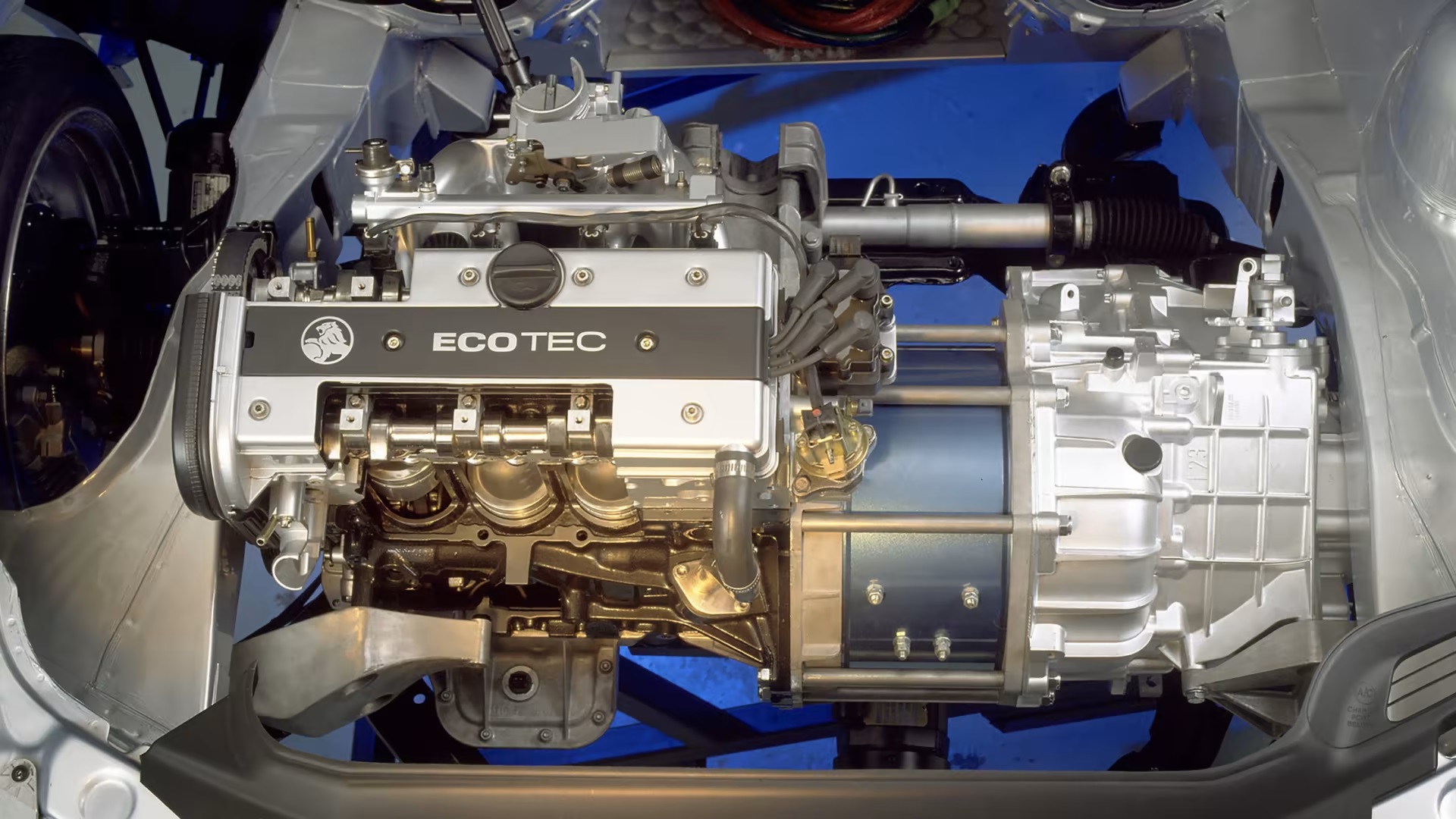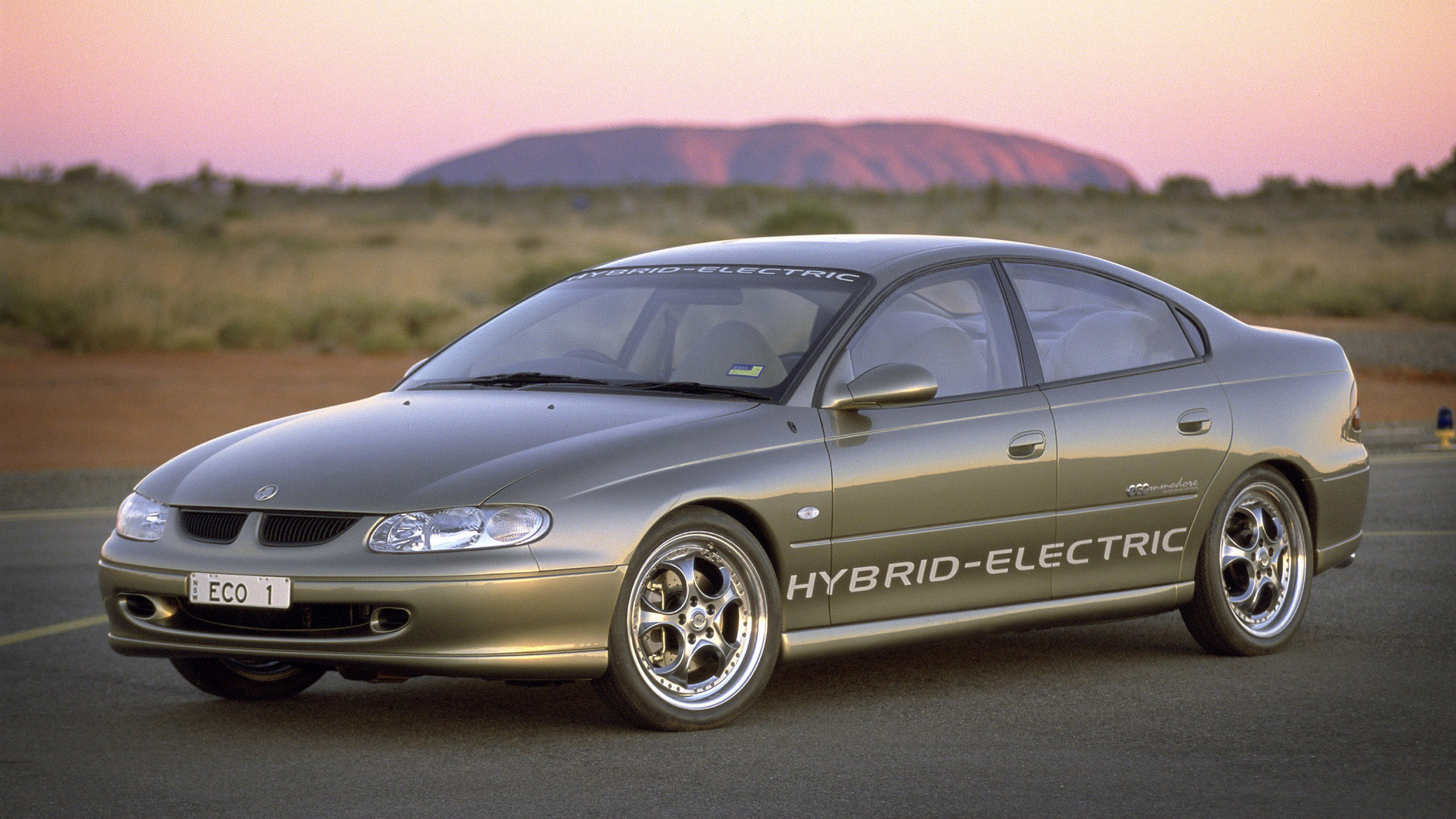
Holden once made a front-wheel-drive hybrid Commodore based on the VT platform that could use as little as 5.6L/100km fuel – in the year 2000.
In the current context of the New Vehicle Emissions Scheme (NVES) which proposes to force importers to sell more fuel-efficient cars, Holden was 20 years ahead of the pack with an engineering solution to today’s problems.
The Ecommodore – as it was dubbed – previewed a hybrid future where L/100km was the new 0-100km/h, and showed how Australia might prepare.
READ MORE: Top 5 Holden concept cars
Developed in conjunction with the CSIRO, under the bonnet was a transverse-mounted, 2.0-litre inline-four producing 95kW, mated to a 50kW electric motor. Scavenged power would be stored in old-school, lead-acid batteries, supported by super-capacitors.

Front-wheel-drive and using a five-speed manual gearbox, the Ecommodore produced 290Nm – 100Nm instantly available from its electric motor, much like a hybrid set-up today.
Holden managed to drop the drag coefficient from the 0.32Cd of a VT II Commodore sedan to 0.28Cd, thanks in part to the sloping, four-door, Monaro-esque roofline. (In a sense, Holden even imagined a ‘four-door coupe’ before any German manufacturer did.)
Weighing 1700kg, the Ecommodore had the longer wheelbase of the Commodore station wagon but shorter overhangs than its sedan equivalent, producing a silhouette that could have been sold in great numbers (with perhaps a V8 engine option).
The end result of the “hybrid-electric” Commodore was a claimed range of 800km from a 45-litre fuel tank, granting economy of around 5.6L/100km – about half that of an Ecotec V6 Commodore of the time. Crucially, it would offer the same level of performance and at only an additional $3000 cost.

Revealed to the Australian public at Sydney Olympic Park on May 24, 2000, the fully functioning Ecommodore concept was transported to Uluru where it accompanied the start of the official Olympic torch relay – bearing the number plates “ECO 1”.
Alas, however, the Ecommodore was a bit too ahead of its time – and went nowhere. Just a single vehicle was built at a cost of about $200,000 (closer to $375,000 in today’s money).
These days that vehicle survives – and is in great hands – sitting quietly on display between other fuel-conscious historic vehicles at the National Motor Museum in Birdwood, South Australia. In a building filled with some of the most important Holdens ever built, it’s easy to walk past the Ecommodore and give it barely a second glance. But as the years go on, its story and what it stood for only increases in relevance.











Discussion about this post